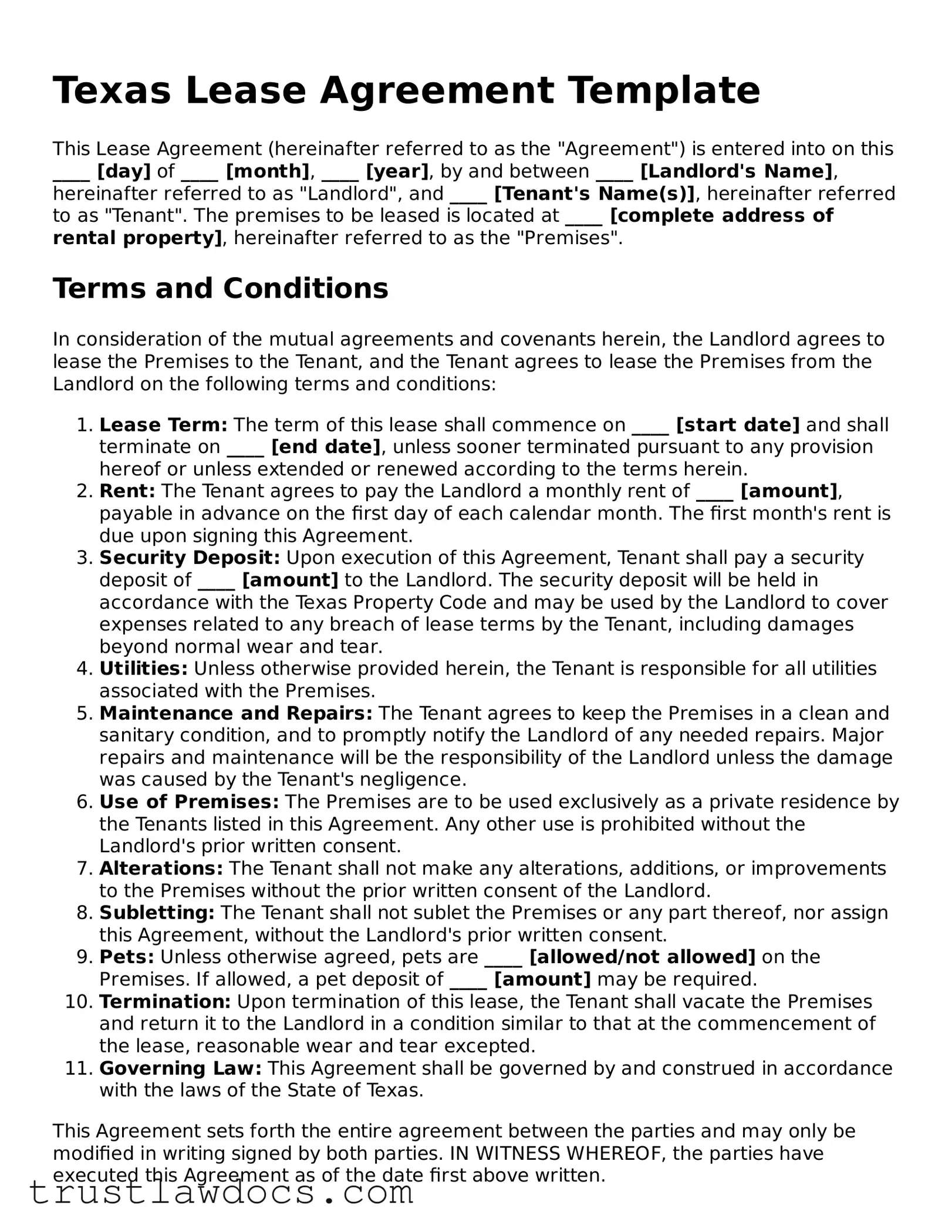What is a Texas Lease Agreement?
A Texas Lease Agreement is a legally binding document between a landlord and tenant that outlines the terms and conditions of renting property in Texas. This agreement covers aspects such as rent amount, payment schedules, rules regarding pets, security deposits, and details on the lease term.
Who needs to sign a Texas Lease Agreement?
Both the landlord (or the property manager acting on behalf of the landlord) and all tenants who will be residing in the property must sign a Texas Lease Agreement. If there are multiple tenants, each must sign to ensure they are all legally bound by its terms.
How long can a lease term be in Texas?
In Texas, lease terms can vary based on the agreement between the landlord and tenant. They can range from a month-to-month arrangement to several years. Most residential lease agreements are for one year, but the length can be adjusted as agreed upon by both parties.
Is a security deposit always required in Texas?
While Texas law does not mandate a security deposit for all rental agreements, most landlords require one as a form of security against possible damages or unpaid rent. The amount and terms of the deposit should be clearly stated in the lease agreement.
Can a tenant terminate a lease early in Texas?
Yes, a tenant can terminate a lease early in Texas under certain conditions, such as military deployment or domestic violence situations. However, unless specified in the lease, early termination without cause can lead to penalties. Tenants and landlords can negotiate terms for early termination within the lease agreement.
What happens if a tenant violates the lease agreement?
If a tenant violates the lease agreement, the landlord has the right to take legal action, which could include eviction. The landlord must provide notice of the violation and allow the tenant an opportunity to remedy the situation, except in cases of serious violations.
Are pets allowed in rental properties?
Whether pets are allowed in a rental property is up to the landlord and should be clearly stated in the lease agreement. If pets are permitted, details about types, sizes, and any additional fees or deposits should also be included.
Is renter’s insurance required in Texas?
While Texas law does not require renters to have insurance, a landlord can require tenants to obtain renter’s insurance as part of the lease agreement. This helps protect the tenant's personal property in case of damage or theft.
Can a landlord enter the rental property without notice?
Landlords must provide tenants with reasonable notice before entering the rental property, except in emergencies. The lease agreement should specify what constitutes "reasonable notice," usually at least 24 hours.
What should be done if either the landlord or tenant wants to renew the lease?
If either party wishes to renew the lease, they should begin discussions before the current lease expires. Renewal terms, including any changes to rent or other conditions, should be documented in a new lease agreement or an amendment to the existing contract.
